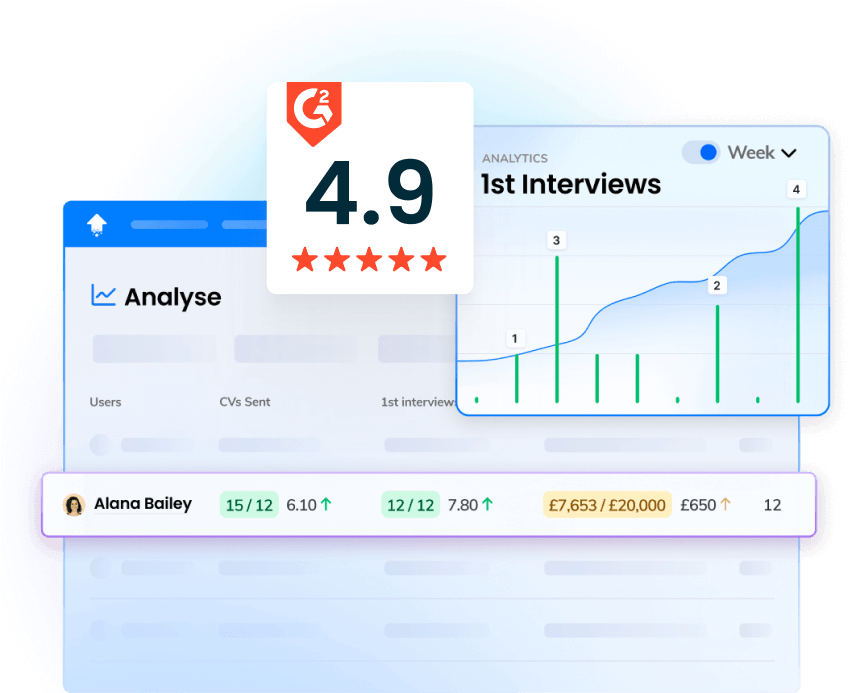You’re not alone. The last few months have been tough for recruitment agency owners. There’s a shortage of vacancies, lots of candidates, and waves of new AI tools – and it’s all happening in the middle of a cost-of-living crisis! This blog explores SaaS companies' business development mindset as there’s plenty of crossover appeal that could help you steady the ship.
As you have most likely placed many prospects into SaaS (Software as a Service) roles and use SaaS tools yourself, we should take a quick peek to see what makes SaaS so popular. The SaaS global market was valued at 261.15 billion in 2022 and it’s expected to keep growing…
Even the biggest companies can struggle to adapt during tough times. Should business slow down for whatever reason, most don’t adjust well to it. The SaaS mindset was built with this in mind and they chose to operate differently. SaaS companies focus on staying lean and efficient – which is exactly what recruiters need right now.
Leveraging the SaaS Business Development Mindset in Recruitment
1. Customer centricity
Every company starts by focusing on its customers but the focus can get blurry later down the line. Managing a team, always trying to grow, and keeping an eye on competitors can cause companies to lose focus on what customers really want. A good SaaS company doesn’t let this happen. Everything they do is based on generating more value for customers.How to be more customer-centric like SaaS companies:
Create detailed buyer personas
Conduct surveys and interviews to learn what prospects and clients did and didn’t like about working with your agency. Use your findings to build buyer personas (one for prospects and another for clients). This will help you focus on the right people and what to look for, so you can identify them early while weeding out the poor fits.
Buyer personas aren’t set in stone. Revisit and update them as you learn more about your ideal prospects and clients.
Sell the benefits, not the features
SaaS companies know that their prospects are busy and it’s hard to persuade them to try a new tool – especially one that they need to pay for. So SaaS companies don’t try to sell them ‘another product’ as that’s not interesting. Their customers want more time, money, productivity, etc. so their marketing and sales teams focus on selling them on the benefits.
Use this uncertain time to get clear on the true value that you offer clients. What’s the real cost of clients recruiting without you? How much time, energy, and focus will it eat up if they manage the recruitment process 365 days a year?
You can place top talent into your clients’ companies so that they protect their time, energy, and focus for their most important goals. That’s huge.
2. Flexibility
It’s no secret that SaaS companies use lots of tech and are fans of automation. While a big ‘tech stack’ and lots of automated processes scare some companies, they offer greater scalability and flexibility than legacy systems and manual processes.
Using SaaS products makes it easy to adjust or swap tools as required. Whereas, using outdated tech affects productivity, doesn’t cater for rapid change, and frustrates the staff that are stuck using it...
Workfront’s 7th Annual State of Work report found that 49% of the UK workforce would leave their job due to frustrations with technology.
Recruitment companies can make themselves more flexible and scalable by booking resource planning time in the calendar to try new tools. Consider tools that could help you boost productivity and motivation while reducing hiring costs.
3. Data-driven decision making
SaaS companies popularised the terms ‘data-driven decisions’ and ‘conversion rate optimisation’. Data guides everything they do. From their product’s features to the topics covered in their marketing – data leads their decision-making.
Like lots of companies, recruiters tend to rack up stacks of data but don’t know what to do with it. They get the bulk of their data from their ATS system, CRM, and checking the careers pages’ conversion rates with Google Analytics. While there’s a lot of valuable data to learn from them, it’s key to stay focused on data that could help you become more effective – not what ‘looks good’.
For instance, a high number of interviews looks good but you could just be screening poorly and booking too many interviews. A high application volume looks good but is it going to take up too much time to review them all?
Use the data to try and spot where improvements can be made to become more effective:
- Time-to-hire
- Cost-to-hire
- Source of hire
- Job offer acceptance rates, etc.
Read the Hiring Hustle Report for a roundup of UK Recruitment metrics performance for 21-22.
SaaS companies’ business development mindset has plenty of crossover appeal. Everything about SaaS is lean and based on generating as much value for customers as possible. This is key as when times get tough, recruitment companies can get stuck in survival mode – which isn’t what customers need from you.
While cutting costs where you can help, it’s the companies that push through the fear and keep on delivering value for customers that continue to progress through tough times. Recurring revenue comes from recurring customer impact. And applying these SaaS mindset principles can help you achieve that at your agency.
Watch our webinar on 'BD Lessons Recruiters Can Take from the Software Industry'.




